7. Jaws (1975)
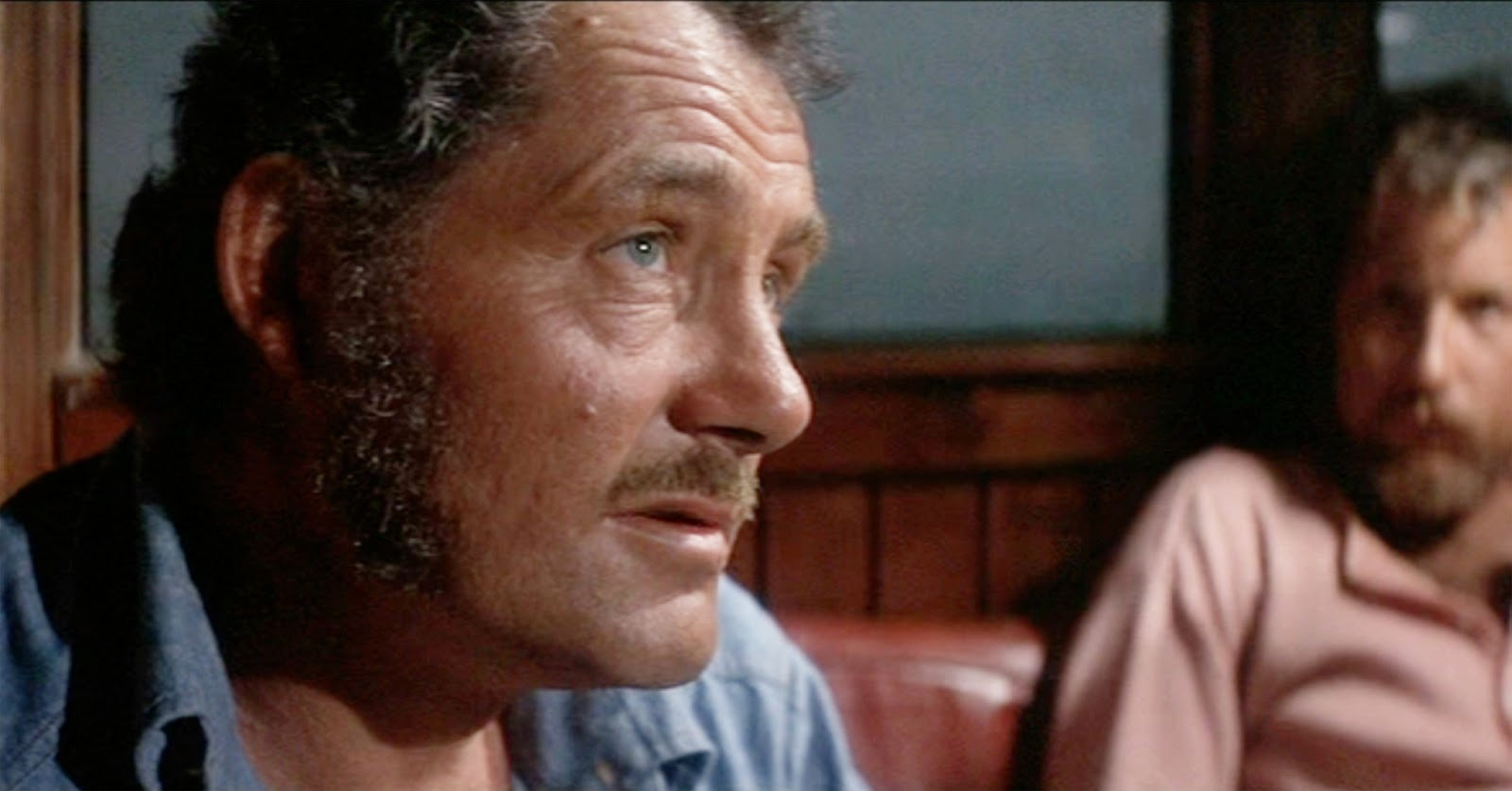
If you can’t hear the ominous two-note cello line in your head just by reading the title, then you probably haven’t seen this film. Although there aren’t many people who haven’t: Jaws was Spielberg’s breakthrough hit and the first true blockbuster in film history. Released in 1975, it was the highest-grossing film of all time up to that point and inspired a fear for the water in the collective conscious.
Jaws is the story of a seaside town gearing up for their summer tourist season that’s suddenly thrown into a panic when a string of shark-related deaths occur just offshore. The town’s police chief (Roy Scheider), an oceanographer (Richard Dreyfuss), and a salty sea captain (Robert Shaw) head out to open waters to take the shark down and find their own lives in danger as a result.
But this film–like many of the rest on this list–hardly needs a summary, a testament to how ingrained it has become in popular culture: parodies, homages, and references have littered the pop culture landscape since its release to the point that even if one hasn’t sat through the entire film they would be familiar with a majority of its plot points.
Spielberg’s first big success ended up being one of his most enduring films and one that’s still enjoyed by modern audiences; it’s so strongly associated with July 4th that it’s annually aired on television and is still rewatched during the summertime by many people in the US.
This early film suggested the iconographic power Spielberg’s films would have going forward, and his ability to create touchstone images and characters–heavily aided by his frequent collaborator John Williams, of course–that would become part of the cultural landscape starts here.
6. Close Encounters of the Third Kind (1977)
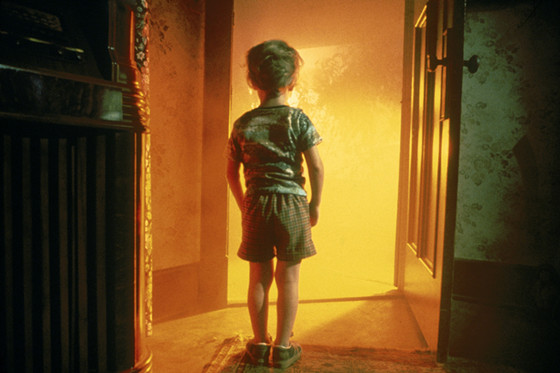
From this point out, there’s not much criticism to raise against Spielberg’s work. Arguably, since #12 on this list, there wasn’t much to criticise: he’s just that great of a director. But to whittle the list down to a Top 10 was particularly difficult to figure out. But here we are: in the Top 6, and every one of them is a classic.
Close Encounters of the Third Kind is one of the best movies ever made after 1970: it’s a more holistic vision of what a potential initial contact with an alien species may look like, and the individual scenes that Spielberg creates–from blue-collar lineman Roy (Richard Dreyfuss) who has a close encounter and creates a surprisingly accurate plateau that signifies where first contact will occur, to toddler Barry’s awash-in-light encounter with the aliens, to the scene where scientists use a color-and-tone based field to communicate with the aliens–contributes to making this one the greatest sci-fi films ever made.
But such is Spielberg’s talent: to make the fantastic ordinary and vice versa until they meet at a spectacular point. And Close Encounters is one of his best, both for its scope and its heart.
Spielberg figures blue-collar characters as the central figures, and their down-to-earth wisdom and natural instincts intuit the aliens far better than the overly intellectual approach of the scientists can grasp. It’s a first-rate humanist film about the first contact between our species and one of another world, and there’s little to criticize of one of Spielberg’s most impressive works of visual fiction.
5. Raiders of the Lost Ark (1981)
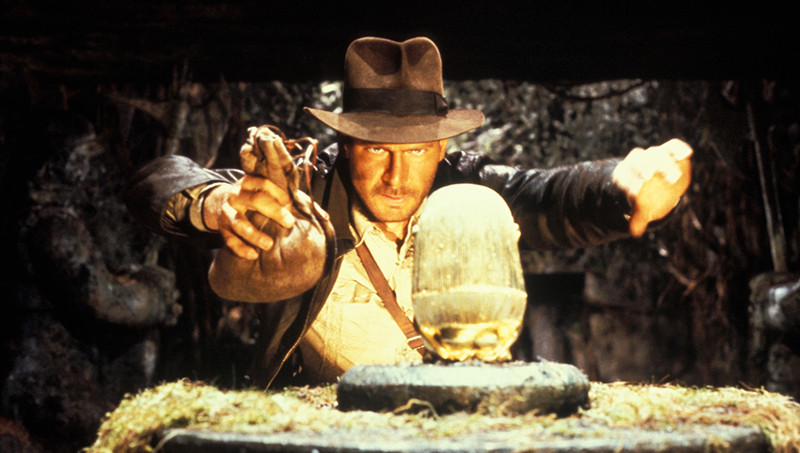
In case you’ve never seen this movie, Raiders of the Lost Ark is the first film in the Indiana Jones franchise, where we are introduced to the adventurous archeologist (Harrison Ford, in an iconic performance) as he travels to exotic foreign lands in search for the Ark of the Covenant. Accompanied by his former lover Marion Ravenwood (Karen Allen), Indy runs afoul of Nazi agents intent on claiming the Ark for themselves, believing it will give the Third Reich the power to take over the world.
But why even suggest that you haven’t seen this movie? Nearly as ubiquitous as Star Wars, Indiana Jones has become part of the fabric of pop culture. Conceived by George Lucas, he and Spielberg discussed the character and film while both were on vacation in Hawaii after their great successes, Star Wars and Close Encounters of the Third Kind.
Shot on a tight schedule, Spielberg seemed on a mission to reclaim his reputation after the embarrassing 1941. It worked, and Raiders of the Lost Ark is now considered one of the best films ever made. Nominated for 9 Academy Awards–including Best Picture–and winning 5, Raiders of the Lost Ark is imperishable entertainment.
The instantly recognizable score by John Williams, excellent special effects, whip-smart script, and superb cinematography combine to create a feast for the senses, a hallmark of Spielberg’s gift for creating high-quality entertainment. With a smart, resourceful, and wry protagonist, incredibly enjoyable action pieces, and great supporting characters, Spielberg created an enduring work of art that still holds up to this day and resurrected the adventure genre in one fell swoop.
4. The Color Purple (1985)
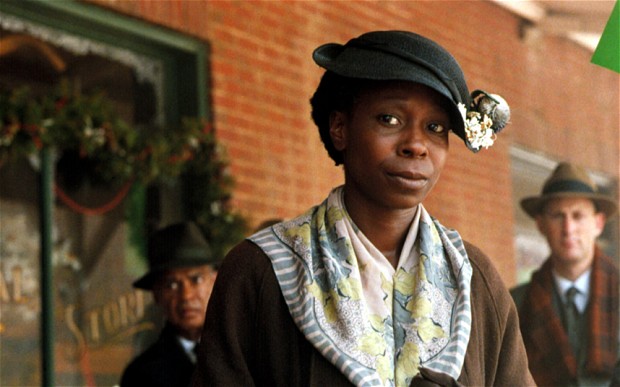
The journey through a hard life through the eyes of a poor black American woman in the first half of the 20th century is the is the basic premise of The Color Purple, but Spielberg’s adaptation of Alice Walker’s novel is much more than this basic outline.
Approaching difficult subjects like domestic violence, sexism, and racism, The Color Purple follows the life of Celie Harris Johnson (Whoopi Goldberg), who is sold to a mean-spirited sharecropper as a wife while still an adolescent. Watching this oppressed black woman go through a life of struggle, loss, and brief glimmers of light is heavy drama made poetic by Spielberg’s gentle touch and ability to humanize his subjects.
As much a sociological as a film, it depicts a now long-gone world of the rural South, disconnected from the outside world as an entire race is subjected to the cruel whims of their white counterparts.
Sometimes difficult to watch, due to the heart-rendering injustices both socially and personally that Celie suffers, the rays of hope that she encounters throughout her difficult life help buoy her along throughout the years. When her freedom finally comes, it’s a relief, and having witnessed her burdens the audience can’t help but feel the same joy she does at the end.
Maybe Spielberg’s most soulful work, The Color Purple articulates the black experience in early 20th century America perhaps better than any other film up to that point. Nominated for 11 Academy Awards (though winning none), Spielberg was criticised for being overly sentimental in his depiction of Walker’s novel, but in this case his sentimentality was much-needed to ease the burden of what would otherwise be a possibly unbearable story to watch.
3. Jurassic Park (1993)
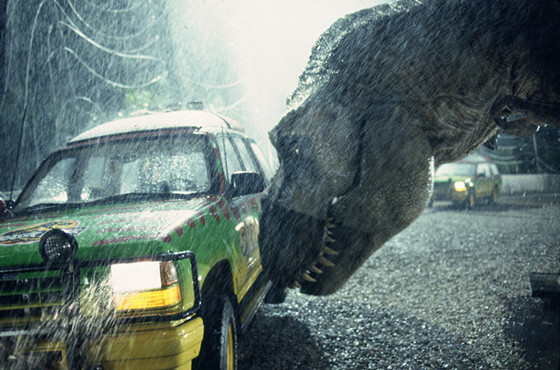
Maybe it was the first film that employed CGI to its greatest effect, or that it was one of the most exciting action thrillers ever made, or maybe it was just Spielberg’s gift at creating a fully realized world. Whatever the reason, Jurassic Park remains one of the biggest and best blockbusters ever created.
It seems at this point in the list summaries of these films is unnecessary: everyone’s seen Jurassic Park, whether in theaters or on DVD or on television by now. If they haven’t seen the original, there are three other films that continue its concept, including last year’s Jurassic World. To sum up: a rich venture capitalist builds the world’s first dinosaur park via cloning and brings both experts and his grandchildren to preview the park before it opens; calamity ensues.
A prime example of Spielberg’s gift at creating believable fantasy worlds and grounding them in reality, Jurassic Park was a massive hit upon its release with an enduring popularity. The special effects still hold up nearly a quarter century after its release, and it revolutionized the use of CGI in films.
But the film still focuses on the all-too-human characters, with children put in suspenseful peril, adults being brought down by their hubris, and the short-sighted nature of people as part of the larger story. It’s an incredible film no matter how you look at it and has few competitors as one of the best big-budget blockbusters ever produced.
2. Schindler’s List (1993)
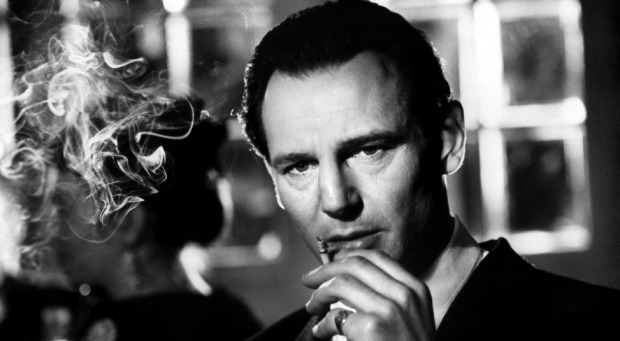
Spielberg has never produced a more serious film than Schindler’s list: his epic holocaust tale is now viewed as a historical document, detailing the horrifying reality of the Nazi persecution, detainment, and methodical genocide of European Jews during World War II.
Focusing on Oskar Schindler (Liam Neeson), a businessman and war profiteer who sees a great opportunity to make money by working with the Nazis and begins using laborers from concentration camps, but then makes plans to save as many as he can from being killed, Schindler’s List is a moving depiction of the monstrous actions of the Nazis and the altruistic nature of one man that surprises even him.
Outside of Shoah, there has never been a more impactful film about the Jewish genocide that occurred during World War II, and its widespread acclaim and distribution has led to its permanent status as one of the most important films produced in the 20th century. By affixing faces and names to the people who endured one of the darkest moments in human history, Spielberg effectively created a heartbreaking document of the inhumane evil that man is capable of–especially when they’re “just following orders.”
This is not an easy film to watch, and afterwards the viewer is left shaken by what they witnessed. But it is an important film–one of the most important ever made. Always technically skilled and able to create an absorbing film no matter the subject, here Spielberg focuses in on creating a historical drama that will resonate for generations to come, perhaps for as long as films continue to be watched.
A masterpiece and an important work of art, Schindler’s List is essential viewing for anyone who wishes to understand the horror that was the Jewish genocide in Europe at the hands of the Nazis.
1. Saving Private Ryan (1998)
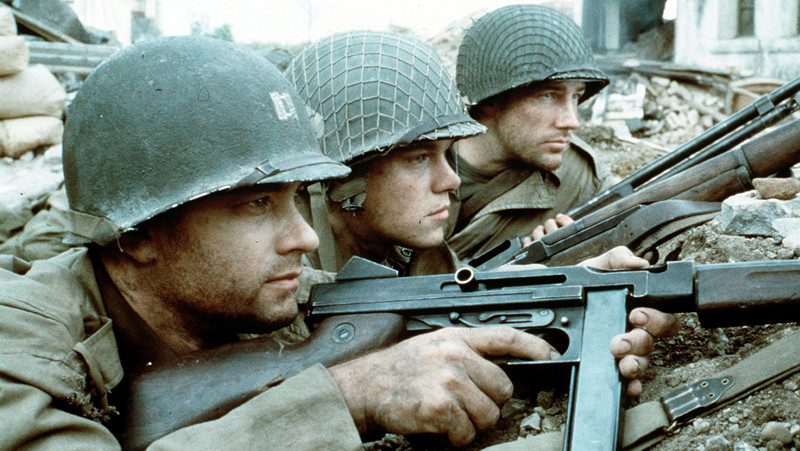
War is Hell, as the old adage goes. But never before had the horrors of war been so gruesomely depicted–nor its necessity better articulated–than Spielberg’s Saving Private Ryan. There are no chest-puffing speeches that glorify war in this film; all of the characters are scared and just want to go home.
When they kill the enemy, they don’t feel satisfied or happy but horrified at what they had just done. While they understand the necessity of what they do, none of them celebrate when they finally take Normandy Beach–and how could you, after watching the chaos and massive violent deaths that just occurred? If these soldiers feel anything, it’s just being glad that they’re still alive.
Spielberg’s World War II film is perhaps the definitive American film on the subject: war is Hell, and so many are sacrificed during it for the sake of trying to make the world safe once again.
Detailing a covert operation where an American Captain (Tom Hanks) has to lead a platoon into unknown territory to try and save one soldier after it is learned that all of his brothers have died in battle, Saving Private Ryan brings the gigantic scope of WWII down to the human level, where we watch as a group of soldiers blindly push forward through hostile territory just to save one man.
It’s not a pleasant movie to watch but it’s incredibly moving all the same. By choosing to depict our protagonists as regular men that were drawn into the history-changing conflict of WWII, Spielberg doesn’t seek to glorify war but honor those that fought in the righteous battle against the Nazis.
Hanks is at his best as an English teacher who has become so hardened by his experiences in the war that he’s afraid his wife won’t recognize him when he gets home that it speaks to the transformative, disturbing effect war has on a man. Saving Private Ryan is possibly the best war film ever made, and certainly the best WWII film ever–not because it makes our protagonists heroes but because it makes these soldiers heroes for the sacrifices they endured to keep the world free.
As a director, Spielberg has been criticized for the overt sentimentality with which he frequently evokes in his films, but Saving Private Ryan is proof that the man who made the first blockbuster and has created scores of crowd-pleasing films is just as able to transcend these labels and create important works of art that will be studied and watched–not just as a film, but part of history itself.
Author Bio: Mike Gray is a writer and academic from the Jersey Shore. His works have been featured on Cracked and Funny or Die, and he maintains a film and TV blog at mikegraymikegray.wordpress.com.